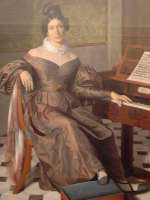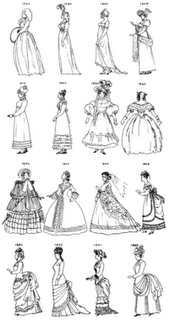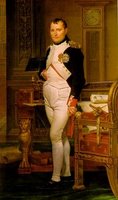Late victorian fashion

The L
 ate Victorian age sees an even swifter change if ladies' fashion, especially of the silhouette. Industrialisation had picked up throughout Western Europe and North America and made a lot of people rich - who now wanted to show off,styles became somewhat effeminate.Long buff,striped,and checked trouses slimmed down to the ankle and strapped under the instep.The tailed frock coat pinched in tightly at the waist and curved out at the chest and hips,creating a feminine outline.The coat opened in front to reveal a frilly expanse of s
ate Victorian age sees an even swifter change if ladies' fashion, especially of the silhouette. Industrialisation had picked up throughout Western Europe and North America and made a lot of people rich - who now wanted to show off,styles became somewhat effeminate.Long buff,striped,and checked trouses slimmed down to the ankle and strapped under the instep.The tailed frock coat pinched in tightly at the waist and curved out at the chest and hips,creating a feminine outline.The coat opened in front to reveal a frilly expanse of s hirting,and a a black silk scarf tied around a stand-up collat.Hair was softly curled,and beards and sideburns came into fashion.
hirting,and a a black silk scarf tied around a stand-up collat.Hair was softly curled,and beards and sideburns came into fashion.In general,long,tight trousers,knee-length frock coat,mustaches and beards remained fashionable.By 1870 a man of fashion would include in his wardrobe the folowing items:a velvet-collared Chesterfield for dress wear,a light colored short sack coat, a riding outfit,coats to be worn with odd checked and striped trousers,distinct evening clothes very like our present formal dress ,an early type of dinner coat,linen sack suits,an Inverness cape,broad four-in-hand ties as well as bow ties and wrapped cravats,a Homburg hat,bowler,boating hat,woolen visored caps,and small cricket cap.
Thanks to:
Mauritia
Fashion era






